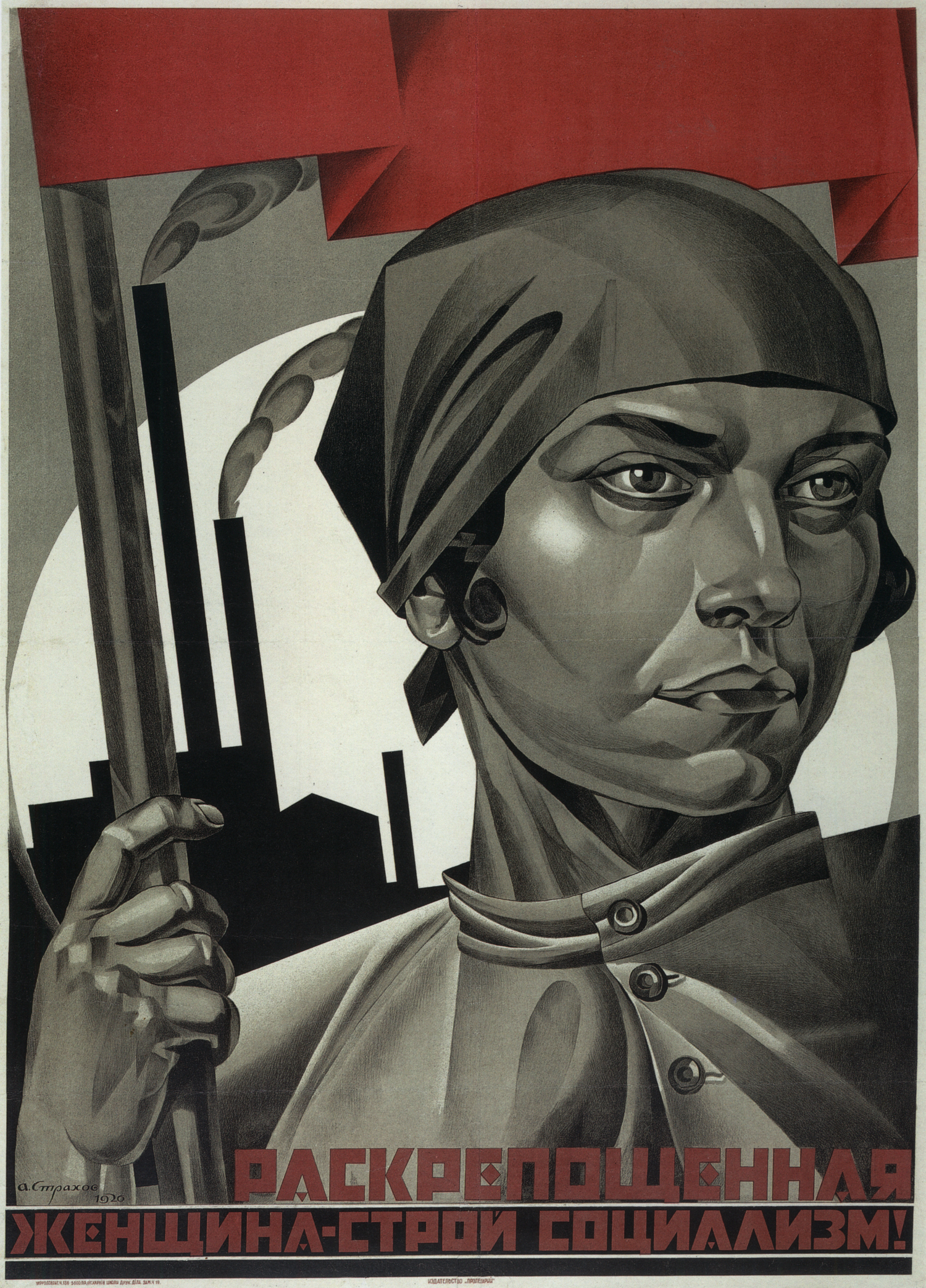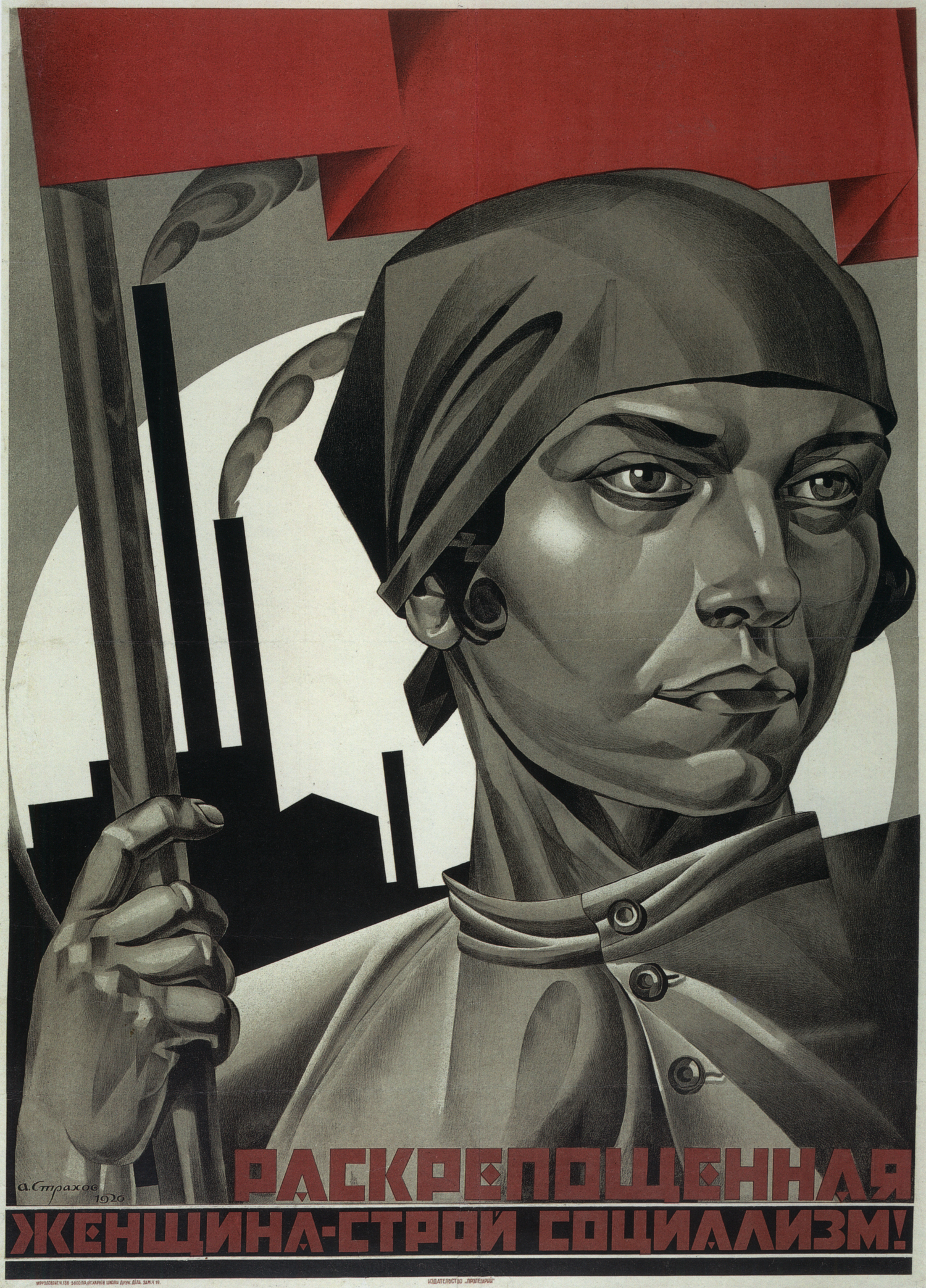Currently being displayed at the Tate Modern in London is the David King Collection, which comprises Russian and Soviet visual material ranging from photographs and books to posters and paintings. The exhibition marks the centenary of the Russian Revolution, and represents a visual map of the political landscape and the tumultuous events that shaped it during the first half of the twentieth century.
Adolf Strakhov was born on the 18th October, 1896 in the town of Yekaterinoslav (now Dnipro, Ukraine). He was a student at Odessa Art School, graduating around 1915. Adolf Strakhov died in Kharkiv on 3 January, 1979.
Dating from 1926, this image was made only a short time after the death of Lenin, just as Stalin was rising. Socialism was supposed to be the new way of life, giving power to the people and removing it from the elitist few, and much of the art and graphic design of the era was all about projecting the values and benefits of a socialist life. Strakhov’s image is visually striking: a female factory worker holds a red banner, symbolizing class struggle and the transformation of women under socialism. Strakhov was a sculptor as well as a graphic artist and painter, which is reflected in the bold, chiselled appearance of the woman’s features, and emphasised further by the high contrast of the black and white palette used. The red banner perfectly offsets her monochromatic face, and her determined look gives us a sense of strength and conviction. Behind her are factory chimneys that encapsulate the energy of the working classes, the importance of labor in achieving an ideal world, and perhaps reveal to us the hopes and aspirations of a nation in the midst of change.
- Sarah
If you like posters, maybe you will be interested in the article "The Poster Manifest: Making Publicity Beautiful Again!" in which we write also about propaganda posters.


 Adolf Strakhov
Adolf Strakhov